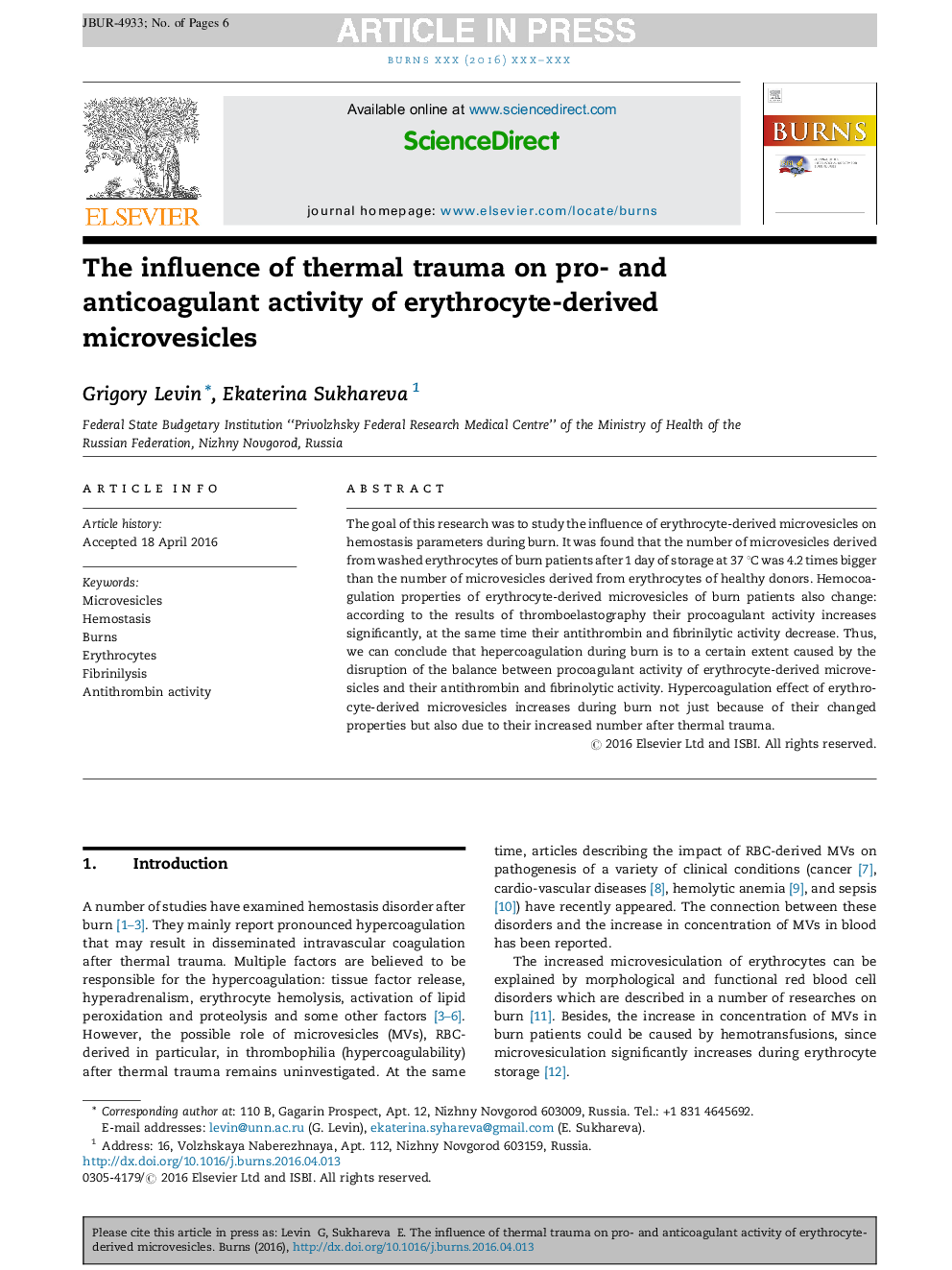| Article ID | Journal | Published Year | Pages | File Type |
|---|---|---|---|---|
| 5636249 | Burns | 2016 | 6 Pages |
Abstract
The goal of this research was to study the influence of erythrocyte-derived microvesicles on hemostasis parameters during burn. It was found that the number of microvesicles derived from washed erythrocytes of burn patients after 1 day of storage at 37 °C was 4.2 times bigger than the number of microvesicles derived from erythrocytes of healthy donors. Hemocoagulation properties of erythrocyte-derived microvesicles of burn patients also change: according to the results of thromboelastography their procoagulant activity increases significantly, at the same time their antithrombin and fibrinilytic activity decrease. Thus, we can conclude that hepercoagulation during burn is to a certain extent caused by the disruption of the balance between procoagulant activity of erythrocyte-derived microvesicles and their antithrombin and fibrinolytic activity. Hypercoagulation effect of erythrocyte-derived microvesicles increases during burn not just because of their changed properties but also due to their increased number after thermal trauma.
Related Topics
Health Sciences
Medicine and Dentistry
Critical Care and Intensive Care Medicine
Authors
Grigory Levin, Ekaterina Sukhareva,
